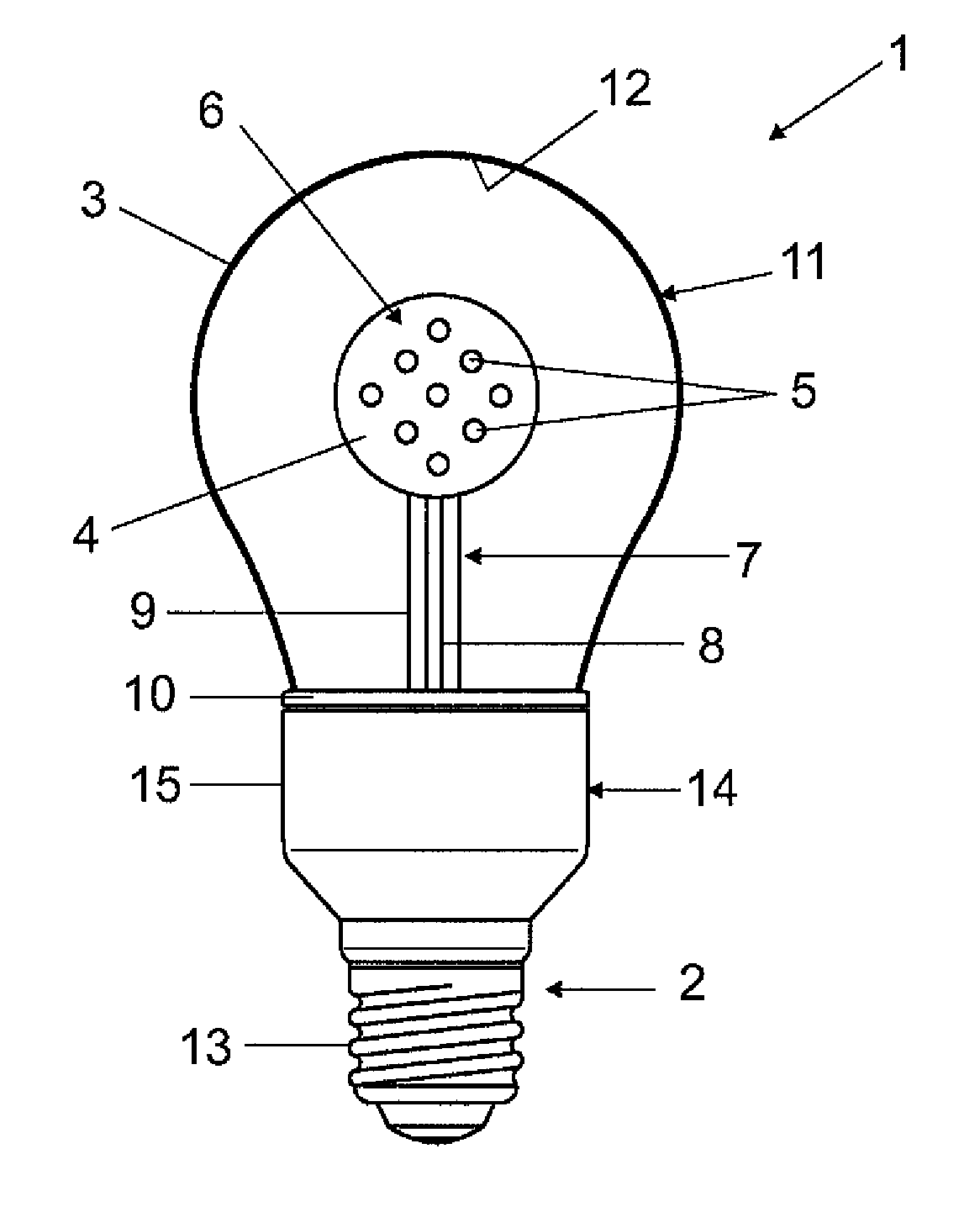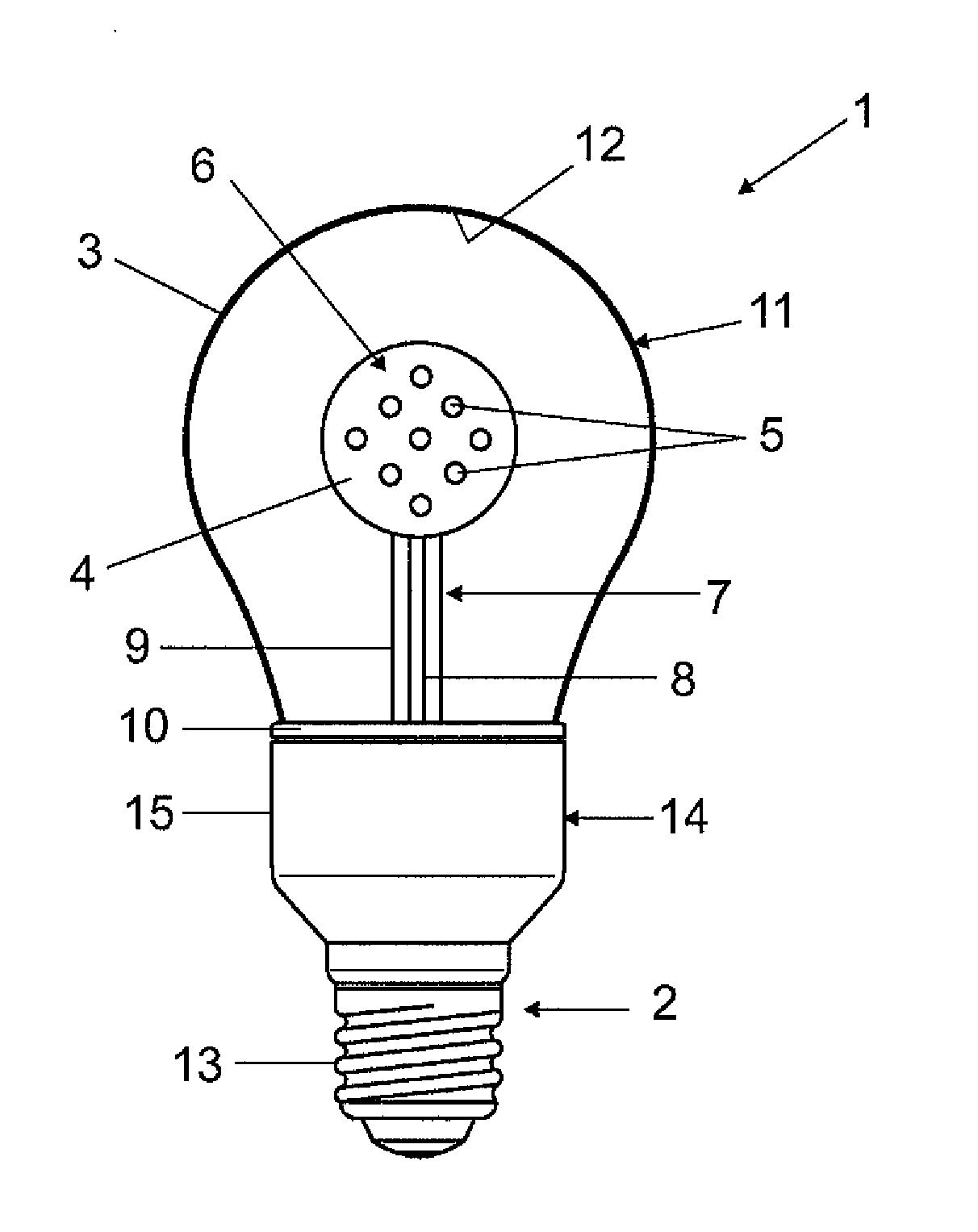Illumination Device Comprising a Light-Emitting Diode
a technology of light-emitting diodes and illumination devices, which is applied in semiconductor devices for light sources, lighting and heating apparatus, and light support devices. it can solve the problems of increasing manufacturing costs, reducing thermal conduction, and only dissipating heat produced during led operation, and achieves good heat transfer and simple means.
- Summary
- Abstract
- Description
- Claims
- Application Information
AI Technical Summary
Benefits of technology
Problems solved by technology
Method used
Image
Examples
Embodiment Construction
[0029]The invention will be described in detail in the following with reference to an exemplary embodiment. As an example of an illumination device 1 according to the invention the figure shows an LED lamp 1 having a base 2, a bulb 3 and a support element 4, on which are arranged light-emitting diodes (LED) 5.
[0030]The support element 4 is formed from aluminum and coated with a nonconducting layer 6 consisting of tetrahedral amorphous carbon (so-called diamond-like carbon, DLC) having a thickness of approximately 2 μm. This layer is both electrically insulating and also outstandingly thermally conductive (more than 600 W / mK, typically approx. 1000 W / mK). This means that the LEDs 5 have an outstanding thermal connection to the support element 4 and are also insulated electrically from the latter. The high thermal conductivity of the DLC layer 6 simultaneously has the effect that the heat being given off by the LEDs 5 is distributed along the surface of the support element 4 and good ...
PUM
 Login to View More
Login to View More Abstract
Description
Claims
Application Information
 Login to View More
Login to View More - R&D
- Intellectual Property
- Life Sciences
- Materials
- Tech Scout
- Unparalleled Data Quality
- Higher Quality Content
- 60% Fewer Hallucinations
Browse by: Latest US Patents, China's latest patents, Technical Efficacy Thesaurus, Application Domain, Technology Topic, Popular Technical Reports.
© 2025 PatSnap. All rights reserved.Legal|Privacy policy|Modern Slavery Act Transparency Statement|Sitemap|About US| Contact US: help@patsnap.com


